Primary, secondary education in Spain for international students
This content was developed with active participation of Mary Bousted.
In the process of preparing the material, we referenced the following sources:
- https://www.internations.org/spain-expats/guide/education
- https://www.timeshighereducation.com/student/where-to-study/study-in-spain.
-
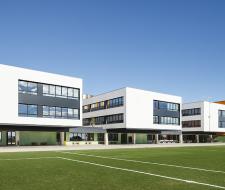 In 2022 our students' IB pionts score is 32.5 above the global average of 31.98
In 2022 our students' IB pionts score is 32.5 above the global average of 31.98 SpainBarcelonaCurrently watching: 9from 38000.00 € / yearApply with documents
SpainBarcelonaCurrently watching: 9from 38000.00 € / yearApply with documents -
 In 2022 an average IB score made up 34 with the highest grade - 44
In 2022 an average IB score made up 34 with the highest grade - 44 SpainMarbellaCurrently watching: 6from 1590.00 € / semesterApply with documents
SpainMarbellaCurrently watching: 6from 1590.00 € / semesterApply with documents -
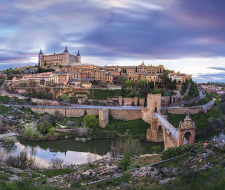 The school is in the top 5 best bilingual schools in Spain
The school is in the top 5 best bilingual schools in Spain SpainMadridCurrently watching: 3from 6885.00 € / yearApply with documents
SpainMadridCurrently watching: 3from 6885.00 € / yearApply with documents -
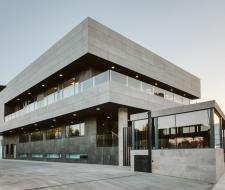 In 2023 100% of students passed the IB exam, the highest score was 41
In 2023 100% of students passed the IB exam, the highest score was 41 SpainSevilleCurrently watching: 3from 34000.00 € / yearApply with documents
SpainSevilleCurrently watching: 3from 34000.00 € / yearApply with documents -
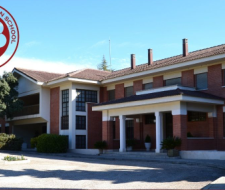 In 2023 100% pass rate and overall average of 33.5, a few points above the world average
In 2023 100% pass rate and overall average of 33.5, a few points above the world average SpainMadridCurrently watching: 4from 29500.00 € / yearApply with documents
SpainMadridCurrently watching: 4from 29500.00 € / yearApply with documents -
 In 2023 - 71.40% of A Level students achieved A* - B
In 2023 - 71.40% of A Level students achieved A* - B SpainMadridCurrently watching: 6from 2600.00 € / termApply with documents
SpainMadridCurrently watching: 6from 2600.00 € / termApply with documents -
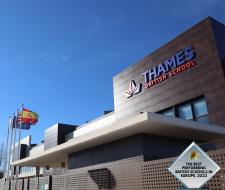 In 2023 90% of students achieved a strong pass of 9-4 (A* - C).
In 2023 90% of students achieved a strong pass of 9-4 (A* - C). SpainMadridCurrently watching: 4from 7560.00 € / yearApply with documents
SpainMadridCurrently watching: 4from 7560.00 € / yearApply with documents -
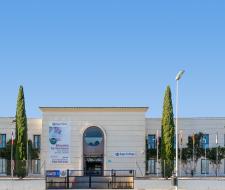 In 2023 - 100% A-Level exam pass rate
In 2023 - 100% A-Level exam pass rate SpainCadizCurrently watching: 2from 26500.00 € / yearApply with documents
SpainCadizCurrently watching: 2from 26500.00 € / yearApply with documents -
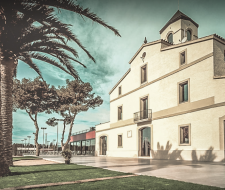 98% of our graduates enter university, with the remaining 2% choose sports careerr
98% of our graduates enter university, with the remaining 2% choose sports careerr SpainBarcelonaCurrently watching: 2from 9950.00 € / yearApply with documents
SpainBarcelonaCurrently watching: 2from 9950.00 € / yearApply with documents -
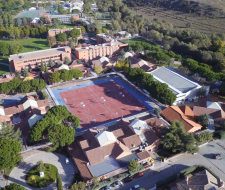 In 2022 an average IB score made up 33.4
In 2022 an average IB score made up 33.4 SpainMadridCurrently watching: 2from 27000.00 € / yearApply with documents
SpainMadridCurrently watching: 2from 27000.00 € / yearApply with documents
Alternative destinations
Education information
Nowadays, education in Spain is really popular among foreign students due to excellent climatic conditions, opportunity to continue studying at prestigious universities of the world. Moreover, Spanish secondary schools provide inexpensive and high-quality courses.
SMAPSE offers 20 best secondary schools in Spain available for foreign students. Due to descriptions of programs and courses at schools, tuition fees and student feedback, it's really easy to make the right choice.
Many foreign students choose Spain as a country for studying due to emphasis on personal development of each student in the best Spanish schools. The teachers pay attention to individual work with students and help them to decide on future university specialization and profession. In prestigious schools in Spain studying of foreign languages is conducted.
Schools in Spain full guide
Schools in Spain full guide
Spain offers a unique educational structure for students, which can be broken down as follows:
-
Initial stage (6 - 12 years): At age 6, children begin their journey in primary schools in Spain, progressing through this stage for six years.
-
Middle Schools in Spain (12 - 16 years): Upon turning 12, students transition to secondary education which spans four years.
-
Full secondary level (Bachillerato, 16-18 years): Beyond the age of 16, students can delve into more specialized studies, preparing for their chosen professions under the "Formacion Profesional". This phase of school education culminates at 18 years.
Features of Secondary Schools in Spain
A hallmark of Spain's education system is the colegios concertados – schools founded by the church. Despite their religious origins, these schools offer a secular-style education. Students in these institutions study general subjects alongside religious disciplines, with an added emphasis on language learning.
Furthermore, Spain boasts a range of top schools that offer international curriculums. Foreign students have the option to enroll in private schools that adhere to the British educational system or the American-Spanish model. These best schools in Spain align with international education standards and equip students with globally recognized qualifications such as the International Baccalaureate or A-Level diplomas.
Upon completing compulsory courses, foreign students can either embark on a professional program or take specialized tests to pursue the Bachillerato program. Comparable to grades 10-11 in the American education system, the Bachillerato provides three years of rigorous study across core subjects.
For those eyeing a spot in a Spanish high school, they can opt for:
-
Local system: Spanish Bachillerato
-
International: European or American system
Stages of secondary education in Spain
|
Age of students |
Stage of education |
|
3-5 |
Preschool (infantil) education |
|
6-11 |
Primary (Primaria) education |
|
12-15 |
Secondary education |
|
16-18 |
Senior classes of secondary education (Bachillerato) |
It's worth highlighting that during the fourth year of secondary school, students are channeled into one of three educational programs:
-
Natural science
-
Social and humanitarian
-
Artistic
As students navigate the final three years in the senior classes of the best schools in Spain, there is a heightened focus on subjects pivotal for success in universities or professional colleges.
In summary, from the list of schools in Spain to understanding their structure and specialties, Spain offers diverse and quality educational opportunities for both local and international students.


What makes Spanish schools special among all schools in the world? Why do parents choose primary and secondary schools in Spain?
There are many reasons. This is a complete immersion in the Spanish language and culture, in the family environment, the strategic position of the country in the south of Europe. Outstanding, rankings educational institutions - well, a rich historical and artistic heritage, warm and hospitable people, colorful holidays, bright cities, unforgettable traditions and folklore!
The Allure of International Schools in Spain
Increasingly, foreign students are gravitating towards international institutions in Spain that offer an English-based educational system. In such schools, Spanish is taught as a foreign language, with primary instruction carried out in English.
Higher Education in Spain: Value and Prestige
Spain is home to both bachelor's and master's degree programs. Despite the affordability of national universities, the diplomas from both private and state institutions are globally recognized. With a list of 47 state universities and 10 private ones, foreign students have a broad array of options.
Cost and Fees of Top Schools in Spain
The cost of education in private schools can vary based on factors like school ranking, exam results, historical prestige, and more. On average, the annual tuition, including accommodation, ranges from 20,000 to 35,000 EUR.

Decoding Preschool Education in Spain
Spanish preschool education, an introductory phase to secondary schools in Spain, is divided into:
-
Kindergarten (Infantil): Catering to children under three years.
-
Preparatory classes (Pre-escolar): Designed for ages 3 to 6.
While these educational phases aren't mandatory, a significant majority of parents opt for them. Spanish kindergartens offer a diverse curriculum, from math and Spanish to music and choreography. They operate typically from 9-10 am to 4-5 pm, with students having meals up to three times daily. Some schools in Spain might only offer two meals.
Primary and Middle Schools in Spain
Secondary education in Spain spans 8 years, accommodating students aged 6 to 14. This stage is mandatory, culminating in a full secondary education certificate.
The first 5 years constitute primary education, where one teacher often covers all subjects. Core subjects include Spanish, Mathematics, Literature, Natural Science, and others. One standout feature in Spain, similar to primary schools in the UK, is early exposure to foreign languages, primarily English, often taught by native speakers.
Following this, students transition to middle school (Educación Secundaria), encountering a more diverse subject pool, including computer basics, art, physics, and biology.
Senior Classes in Spain's Best Schools
The Bachillerato program, akin to high school, extends over two years for students aged 14 to 16. Though not obligatory, this certificate is crucial for those aspiring to attend top-ranking Spanish universities. Alternatively, students can opt for vocational training in their chosen fields.
The Bachillerato curriculum encompasses:
-
Theatrical art
-
Economics
-
Natural science
-
Visual art
-
Humanities and social sciences
-
Technology
Core subjects include Spanish and English, supplemented by elective subjects aligning with prospective university specializations.
Type of Schools in Spain
There are three main types of secondary schools in Spain:
-
State school (colegios públicos)
-
Parastatal school (colegios concertados)
-
Private schools (colegios privados)
State schools primarily admit Spanish residents or those with a residence permit. Parastatal schools, funded either by Catholic churches or the state, emphasize foreign languages, devoid of compulsory religious studies. Private schools, including many international ones, cater to a broader demographic, offering curricula from various countries. These schools often provide A-level or International Baccalaureate programs, maintaining high international academic standards.
Exams in Spanish Secondary Schools
Frequent tests and evaluations are staples in Spanish schools. Primary school students undergo trimester evaluations in all mandatory subjects. Year-end examinations assess both mandatory and additional disciplines, with a teacher council determining students' promotions. Successful completion of secondary education leads to the Bachillerato high school admission.
As for the grading system, it's on a 10-point scale:
-
Below 5: Unsatisfactory (SS or D)
-
5: Satisfactory (S)
-
6: Good (BI)
-
7-8: Excellent (NT)
-
9+: Superb (SB)
-
10: Outstanding (MH).
Duration of academic year in prestigious secondary schools in Spain, vacations
Academic year in secondary schools in Spain(as in secondary schools in UK) lasts from the middle of September to the middle of June. Academic year in Spain divides in 3 trimesters (each lasts 11 weeks):
- First trimester (September – December) - followed by a two-week Christmas vacation
- Second trimester (January – March or April) – followed by a two-week spring vacation
Third trimester (May – middle of June) - after which students go on summer holidays lasting up to 11 weeks.
What are the main levels of secondary education in Spain?
Can international students study at a public school in Spain?
What is the difference between private schools and public schools?
What are the advantages of a private school in Spain?
What subjects are studied at the ESO stage?
What exams are taken to complete secondary education?
What international diplomas can be obtained in Spain?
How can national and regional languages influence learning in Spain?
What financial aid opportunities are available to students?
What is the role of standardized tests in secondary education in Spain?
Top 5 best schools in Spain 2024
| 1 | Sotogrande International School |
| 2 | King's College Madrid |
| 3 | International School San Patricio Toledo |
| 4 | Caxton College |
| 5 | Colegio Base CEIAM |
Learning programs-summary information
| Name | Meaning | Equivalent | Min. age | Duration, years |
Next stage | Cost |
|---|---|---|---|---|---|---|
| GCSE | General certificate of secondary education | secondary education (non-accomplished) | 14 | 1–2 | A-Levels | 15,000 USD+ |
| A-Levels | Advanced level | secondary education (accomplished) | 16 | 2 | University | 15,000 USD+ |
| BTEC | Business and Technology Education Board | secondary special education | 14 | 2–3 | University/ work | 15,000 USD+ |
| Oxbridge Preparation | Preparing for Oxford and Cambridge | secondary education (accomplished) | 17 | 1 | University | 15,000 USD+ |
| International Baccalaureate | International baccalaureate | secondary education (accomplished) | 16 | 2 | University | 18,000 USD+ |
| Foundation/ Pathway Year | Preparatory year | admission to the 1st year of university | 17 | 1 | University | 14,000 USD+ |
| NCUK | The Northern consortium | 2 year university | 17,5 | 1 | 2 year University of NCUK | 13,000 USD+ |
| Special Preparation (Medics/Math/Business) | Specialized training | - | 14 | optional | optional | 4,000 USD+ |
| Academic English | Academic English | Language school | 8 + | 6–12 months | School or University | 8,000 USD+ |
Advantages and disadvantages of English schools
| Advantages | Disadvantages |
|---|---|
| The opportunity to enter the best universities in England, USA, Canada, Switzerland, Europe, the world | Expensive |
| High quality of education and academic standards | Strong workload |
| Perfect English after graduation | The need to change the social environment; it takes time to adapt |
| Useful contacts | The difficulty of choosing the most suitable school for the child, requires a qualified specialist |
Top 21 boarding colleges in England 2024
| 1 | Cardiff Sixth Form College |
| 2 | National Mathematics and Science College |
| 3 | Abbey College Cambridge |
| 4 | d'Overbroeck's College |
| 5 | MPW London |
| 6 | CATS Cambridge |
| 7 | Kensington Park |
| 8 | DLD London |
| 9 | King's College St Michael’s |
| 10 | Bellerbys Cambridge |
| 11 | Chelsea Independent College |
| 12 | MPW Cambridge |
| 13 | Bellerbys Brighton |
| 14 | CATS London |
| 15 | St Clare's Oxford |
| 16 | Bishopstrow College |
| 17 | CATS Canterbury |
| 18 | Bellerbys London |
| 19 | Ealing Independent College |
| 20 | Cambridge Tutors College |
| 21 | Abbey Manchester |



